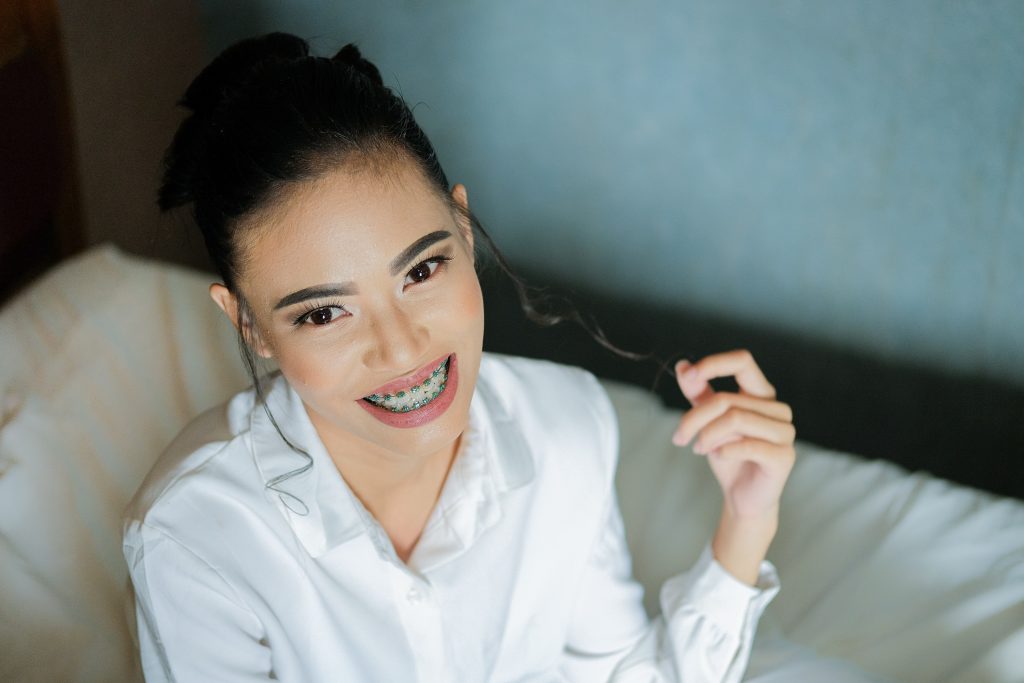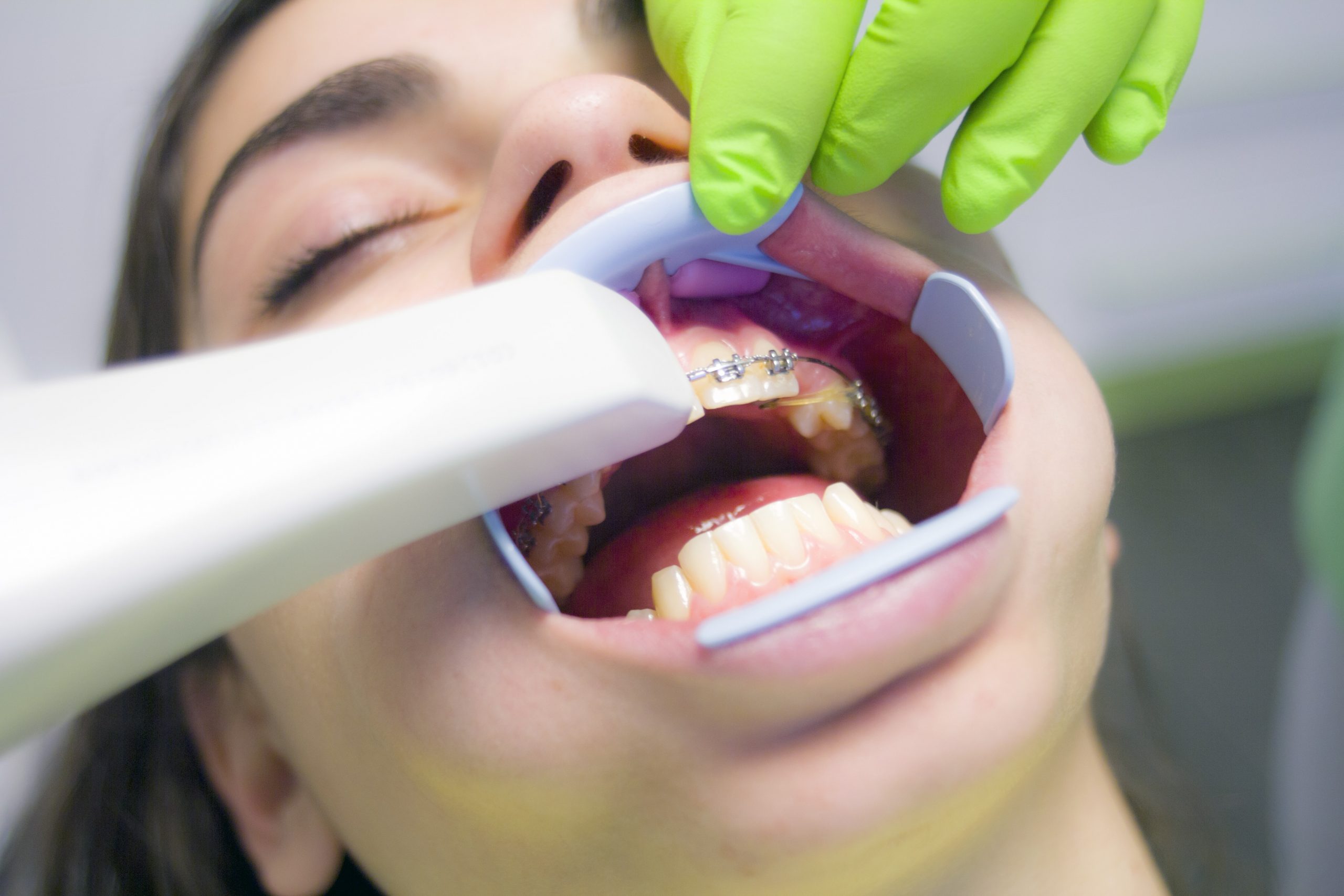One of the main difficulties associated with installing a bracket system for a child is its possible unaestheticness. This is especially true for adolescents who are painfully experiencing any flaws in their appearance, and children who may be ridiculed by their peers. To make children feel more confident, experts have developed various options for inconspicuous systems that can correct the bite without attracting undue attention to the teeth.

Types of invisible braces
Dentists use various models of orthodontic structures.
- White braces. The white system does not stand out so much on the teeth and is almost invisible.
- Sapphire and ceramic designs. They do not attract much attention due to their small size, as well as the color of the material, which practically merges with the surface of the tooth.
- Plastic systems. They can also be tooth-colored or even transparent. Their cost is much lower than that of sapphire or ceramic. These braces are designed for a short wearing period and are not suitable in all cases.
- Lingual braces. With a lingual installation, the system is not attached to the outer, but to the inner surface of the teeth, therefore it is completely invisible from the outside. However, this type of braces is not recommended for children under 13 years of age.
Invisible braces can allow your child to smile calmly without being embarrassed by the look of their teeth. This will not affect the duration of treatment (except, perhaps, lingual braces, which have their own characteristics), and will add mental comfort to the young patient.
Installation
The installation process depends on the type of invisible braces. If classic (white painted), sapphire or ceramic designs are chosen, the procedure is usually carried out in a standard way and lasts about an hour. With the help of glue, plates are attached to the outer part of the dentition, which are connected by an arc. In the case of lingual braces, installation will be more difficult. The system will have to be fixed on the inside of the tooth, where it is not so easy to reach with dental instruments. In this regard, the installation can take longer than in other cases, and up to two hours in duration.
Treatment process
Wearing braces. It all depends on the age of the child (in young children, teeth can move faster) and on the degree of curvature of the teeth. The type of braces also affects (for example, lingual braces will have to be worn longer than other designs). Make sure that for a few days after installing them, the child is on a diet and ate mostly liquid and soft foods. During wearing, you should regularly visit your dentist to monitor the process and, if necessary, make changes to the system.
Retention period. After the long-awaited removal of the braces, a retainer (structure for maintaining the bite) of a removable or non-removable type is installed on the teeth. The latter option, as a rule, is attached to the inside of the dentition and is invisible from the outside. Removable is usually transparent and almost invisible to others. The choice of a retainer for a particular patient is made by the doctor. The retention period usually lasts longer than the period of wearing the braces. But do not neglect it in order to maintain the achieved effect as long as possible.
Indications and contraindications
Indications for wearing braces are curvature of teeth of varying severity: incorrect position or rotation of one or more of them, problems with bite, impacted teeth or located outside the arch, tremata, diastemas, etc. consequences for the child:
- rapid abrasion of teeth;
- problems with the gastrointestinal tract due to poor-quality chewing of food;
- an increased risk of dental disease;
- improper bite, including leading to a displacement of the jaw.
- The need to install a bracket system is determined by the doctor. He also collects anamnesis and reveals whether the patient has the following contraindications:
- diseases of the cardiovascular and skeletal systems;
- tuberculosis;
- diabetes;
- blood diseases;
- mental disorders;
- a state of acute immunodeficiency;
- inflammatory process inside the oral cavity, etc.
- Before installing braces, you should treat all teeth that are affected by caries, as well as undergo professional cleaning. This will avoid problems when wearing braces. Tartar-free teeth are less likely to develop caries and are easier to install. In the case of invisible lingual braces, a contraindication is also the age of the patient up to 13 years.
Clinic “Martinka” offer
- Children’s Dental Clinic “Martinka” offers high-quality treatment of curvature of teeth using braces, including the use of invisible braces of various types. Our advantages include:
- favorable prices, thanks to which you can save on treatment and not lose in quality;
- experienced doctors who know how to work with children so that they are not nervous and are not afraid of the procedures;
- a cozy atmosphere specially created for children: they can play with soft toys, watch cartoons or admire the fish in the aquarium. We try to make your stay in our clinic as convenient and pleasant as possible.
- We have been providing dental services for 15 years and during this time we have gained a lot of experience in working with children and adolescents. Martinka’s specialists are highly qualified and ready to help with the selection and installation of braces. Contact us! To make an appointment with your child, just call the clinic or fill out the registration form located on the website.


